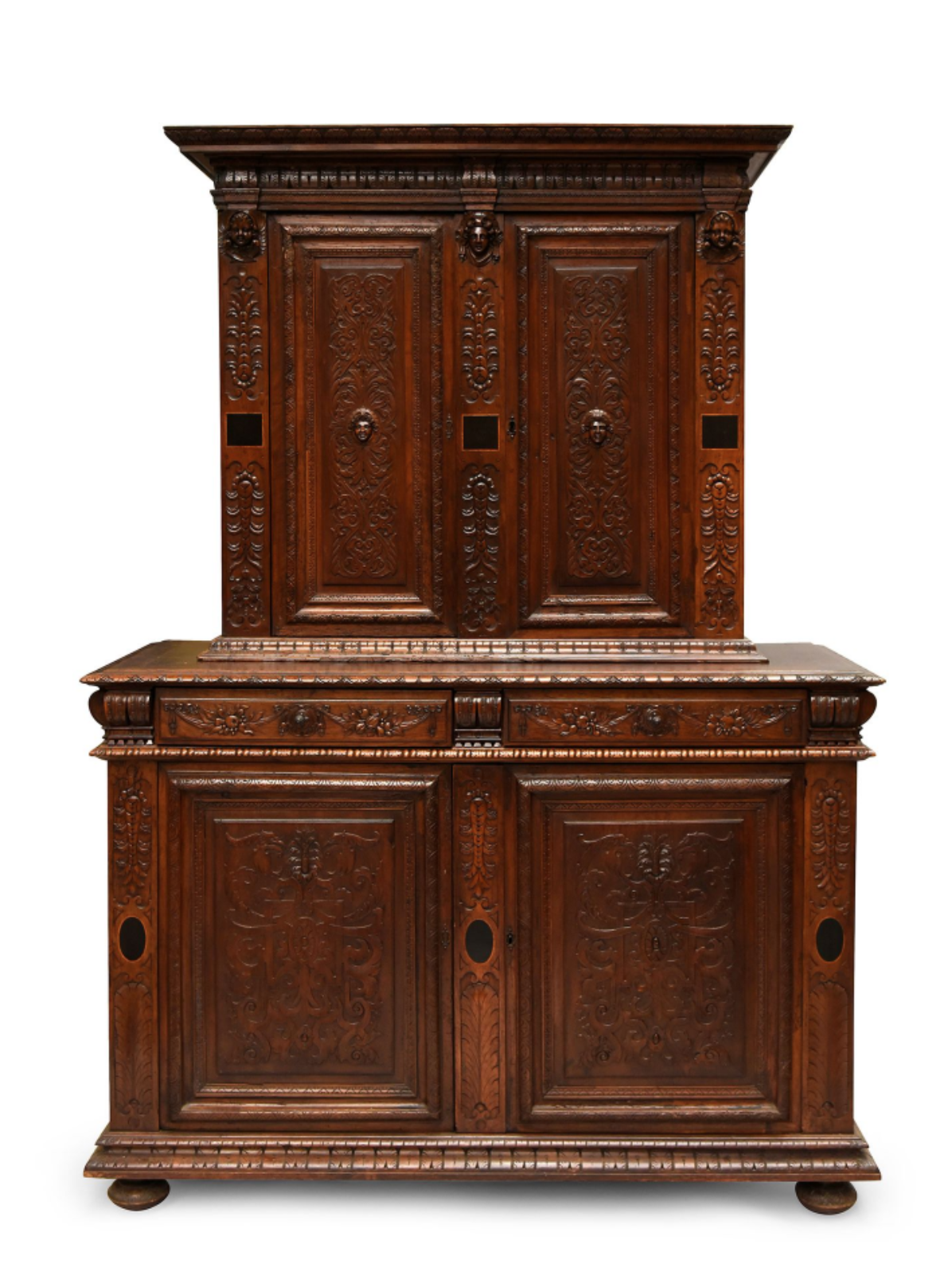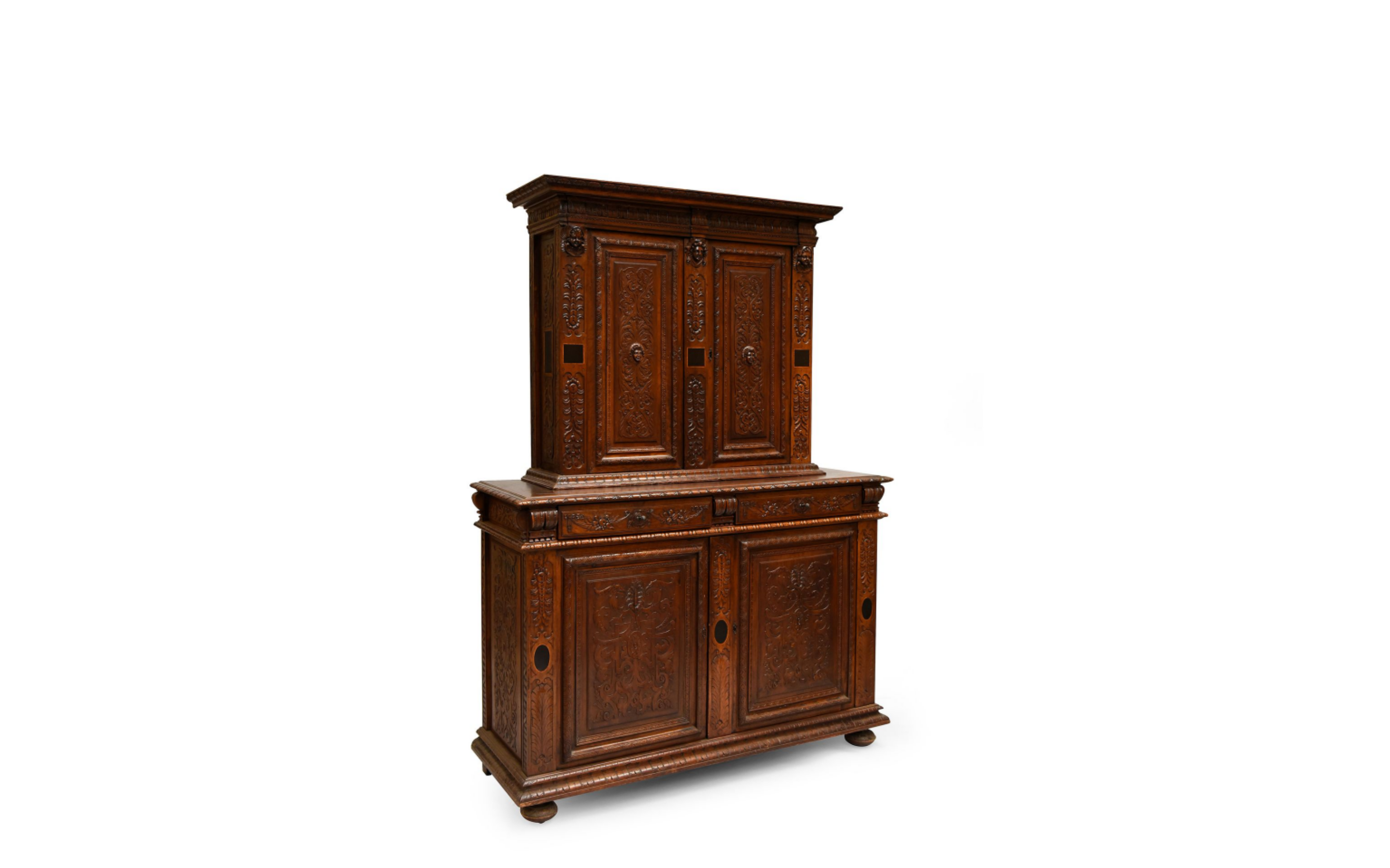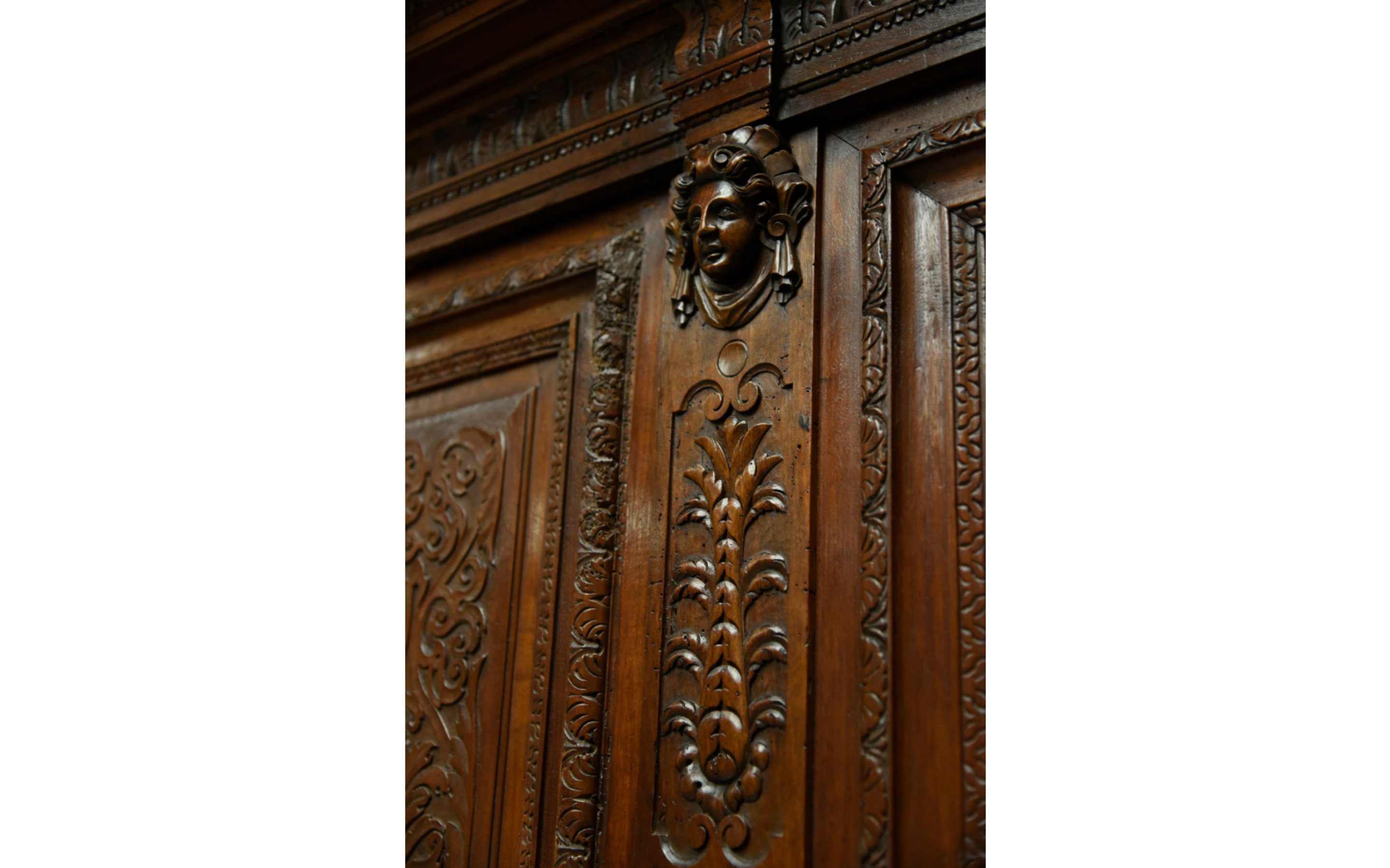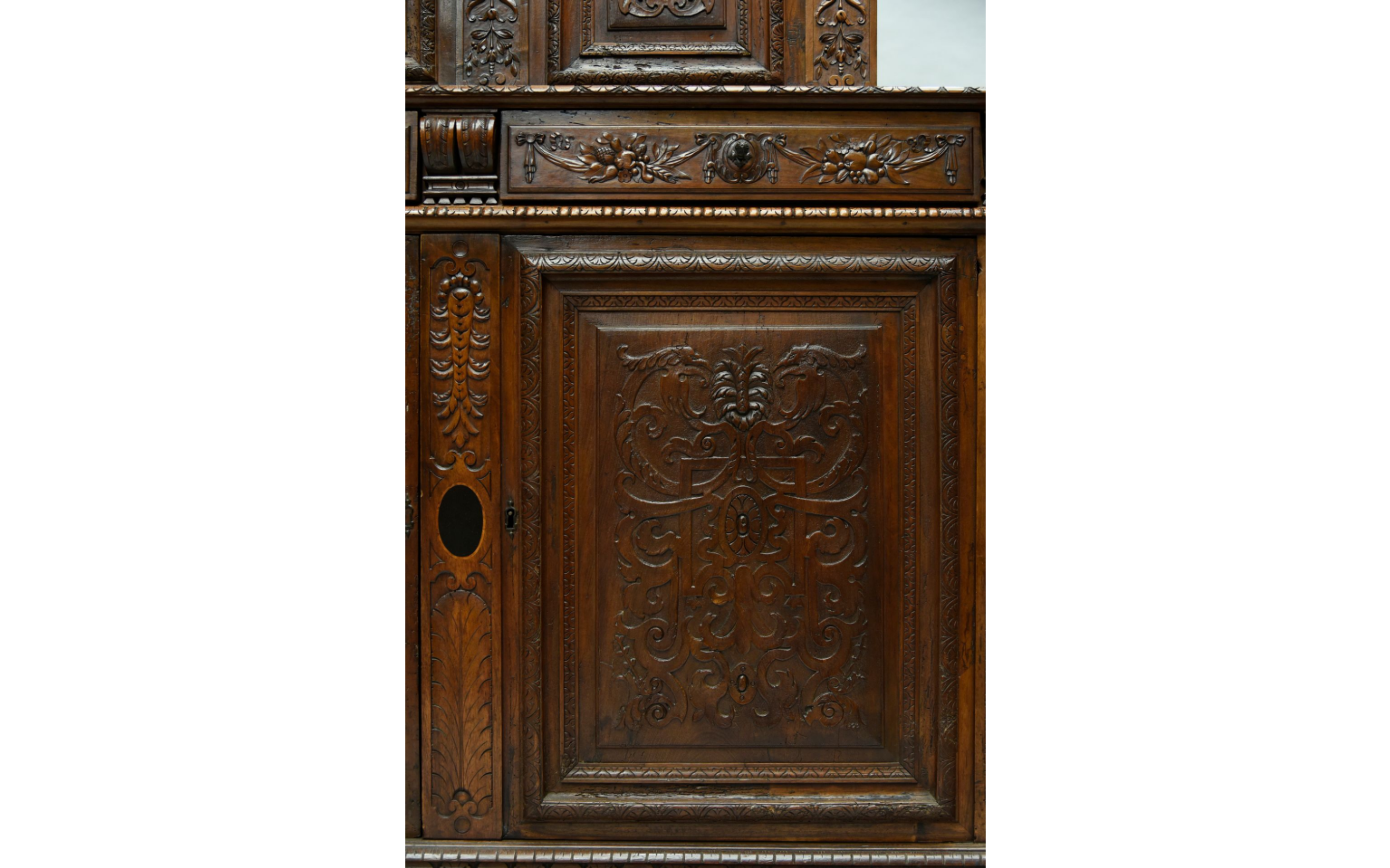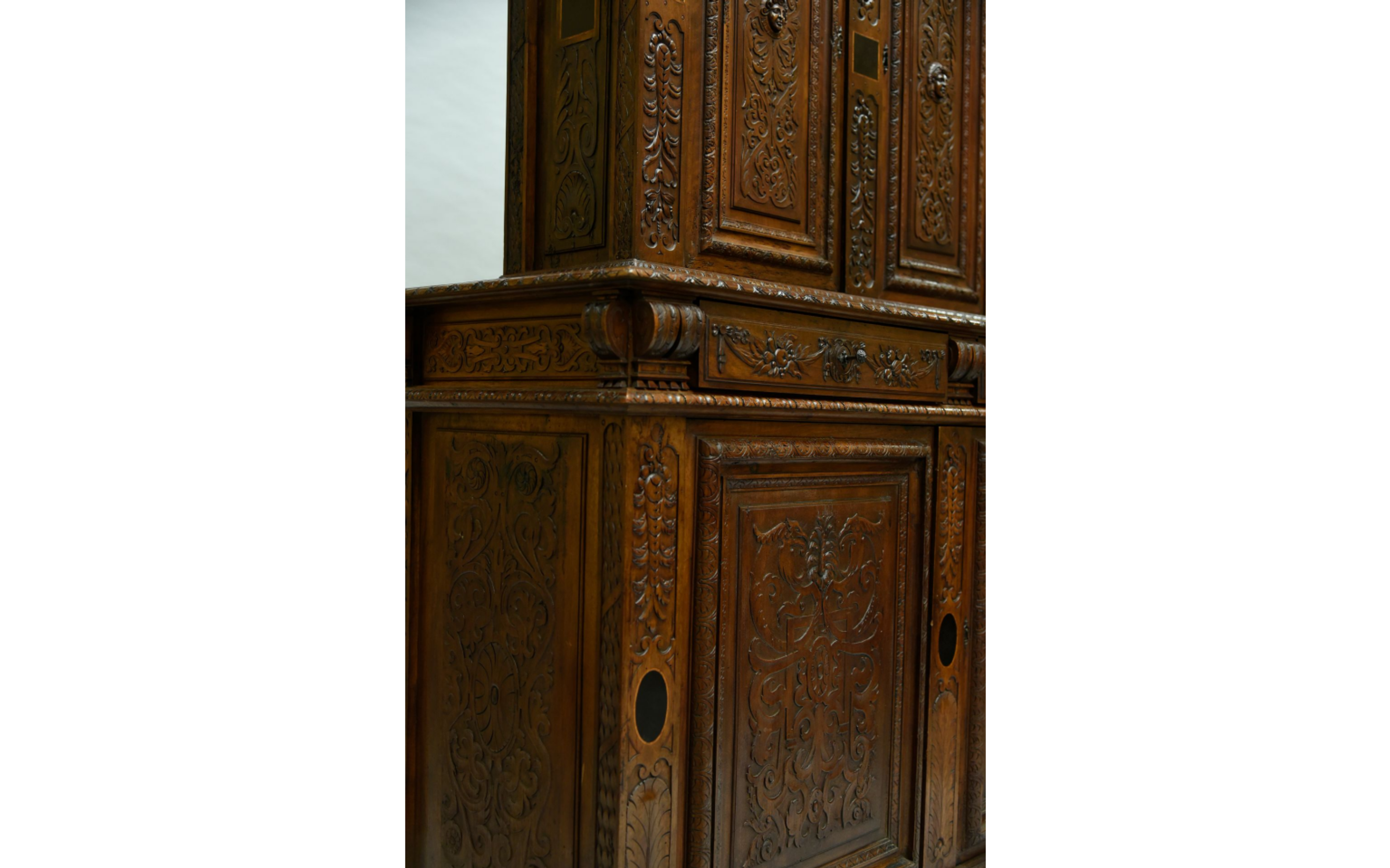Description
Historical background
The 16th century is a prosperous period for Lyon. The several fairs held in the city assure an economic vitality as well as a position of European crossroad. The royal court and many talented artists sojourn in this city thus promoting artistic creation. The thriving Lyon printing industry broadcasts models from the most influent and innovative artists. Those models are absorbed, revisited, transformed by Lyon workshops.
This is also during the 16th century that the city of Lyon re-discover its glorious antic past. Classical Antiquity gives the city fresh air to breathe with a new ornamental repertoire, interlacings, laurel leaves, choux bourguignons, palm leaves, spokes of heart, putti and grotesques.
These motifs can be seen on cabinet-makers’ and wood-carvers’ production. Artisans uses ornamental techniques similar to engraving’s giving a true identity to Lyon’s furnishing.
Furthermore Lyon’s cabinet-makers renew the furnishing’s structure using Antic architectural vocabulary first updated by Italian artists. This classical language may have been boosted by Sebastiano Serlio’s presence in Lyon. Likewise, Philibert de l’Orme, architect born in Lyon, travels to Rome to get acquainted with classical architecture.
While these references to Antiquity are common to all of Europe, Lyon distinguishes itself by using Antic concepts of balance and structure and by not being to literal, dismissing columns and pediments. The final result is perfectly harmonious and appears less architectural than in other regions.
Description
This is a two bodies cabinet with a recessed upper body. It opens with four door-leaves and two drawers inside the belt. The cabinet stands on a moulded and leafy base. The cabinet’s perfectly mastered architectural design and the balance of proportions are remarkable.
The cabinet’s structure is cleverly broke down. Horizontally the two bodies are divided by the two drawers belt. Vertically the four door-leaves are framed by jambs enriched with palm-leaves, choux bourguignons, flowers and blackened wood cartouches.
The two lower-body door-leaves are inserted in a mitre-cut assembled moulded frame and are ornated with symmetrical interlacings and vegetal scrolls. From those curls appear stylized birds’ heads centred by a chou bourguignon.
Both drawers are adorned with fruit garlands. A console separates the drawers.
The upper-body door-leaves are carved with leafy interlacings centred by a female mask.
The side panels are carved with a radiating rose decor for the upper-body and leafy blackened wood for the lower-body. The jambs are enriched by laurel frieze and an interlacing decor adorns the belt.
The care given to the lateral panels’ decor testifies the refinement of this cabinet.
The cabinet is topped by a protruding cornice carved with two palm-leaves friezes highlighted by two fusarolles. Two winged putti’s heads consoles and one female mask console support the cornice.
This cabinet’s decor shows a remarkable quality of execution and an amazing diversity. Friezes, panels, masks are all individualized. The refinement of the ornaments is anything but dull with reliefs producing light and shadow effects animating the panels’ surface. No doubt this sumptuous cabinet has been delivered by a skilled artisan.
With this perfectly harmonious cabinet are united an architectural structure and an engraving-style inspired decor. Those elements are typical of the school of Lyon between 1540 and 1570.
Literature
BOCCADOR Jacqueline, Le Mobilier français du Moyen Age à la Renaissance, Éditions d’art Monelle Hayot, 1988
THIRION Jacques, Le Mobilier du Moyen Age et de la Renaissance en France, Edition Faton, 1998
VIRASSAMYNAÏKEN Ludmila (dir.), Arts et Humanisme, Lyon Renaissance, Somogy éditions d’arts, Paris, 2015

